
Taro Island: A Hidden Gem in the Solomon Islands
Discover Taro Island, a hidden gem in the Solomon Islands, offering pristine beaches, vibrant coral reefs, and rich cultural heritage for an unforgettable escape.
Taro Island, the capital of Choiseul Province in the Solomon Islands, is a serene and unspoiled paradise. Surrounded by turquoise waters and lush greenery, the island offers a perfect escape from bustling city life. Its small size and friendly locals make it an ideal destination for those seeking a peaceful retreat. The island boasts pristine beaches, where you can relax under swaying palm trees or indulge in water activities such as snorkeling and diving. The vibrant coral reefs and diverse marine life provide an underwater spectacle that is hard to find anywhere else. For nature enthusiasts, the island's dense forests and hiking trails offer the opportunity to explore its rich biodiversity. In addition to its natural beauty, Taro Island has a rich cultural heritage. Visitors can experience traditional Solomon Islander customs and crafts by interacting with the local community. The island's historical sites, including ancient shrines and war relics, add an extra layer of intrigue to your visit. Whether you're an adventurer, a history buff, or simply looking to unwind, Taro Island promises a unique and memorable experience.
Local tips in Taro Island
- Bring cash: ATMs are scarce, so it's best to have local currency on hand for purchases.
- Respect local customs: Dress modestly and ask for permission before taking photos of people.
- Plan your visit during the dry season: The best time to visit is between May and October when the weather is more favorable.
- Local guides: Hiring a local guide can enhance your experience, providing insights into the island's culture and natural wonders.
- Stay hydrated: The tropical climate can be humid, so make sure to drink plenty of water.
Taro Island: A Hidden Gem in the Solomon Islands
Taro Island, the capital of Choiseul Province in the Solomon Islands, is a serene and unspoiled paradise. Surrounded by turquoise waters and lush greenery, the island offers a perfect escape from bustling city life. Its small size and friendly locals make it an ideal destination for those seeking a peaceful retreat. The island boasts pristine beaches, where you can relax under swaying palm trees or indulge in water activities such as snorkeling and diving. The vibrant coral reefs and diverse marine life provide an underwater spectacle that is hard to find anywhere else. For nature enthusiasts, the island's dense forests and hiking trails offer the opportunity to explore its rich biodiversity. In addition to its natural beauty, Taro Island has a rich cultural heritage. Visitors can experience traditional Solomon Islander customs and crafts by interacting with the local community. The island's historical sites, including ancient shrines and war relics, add an extra layer of intrigue to your visit. Whether you're an adventurer, a history buff, or simply looking to unwind, Taro Island promises a unique and memorable experience.
When is the best time to go to Taro Island?
Iconic landmarks you can’t miss
Solomon Scouts & Coastwatchers Monument
Explore the Solomon Scouts & Coastwatchers Monument, a significant tribute to local heroes of WWII in Honiara, revealing stories of bravery and resilience.
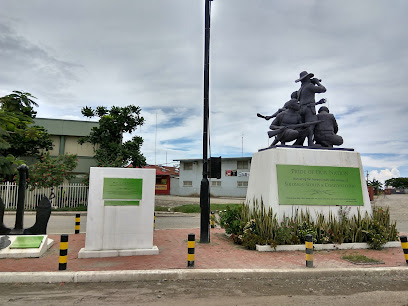
Choiseul Bay Airport
Experience breathtaking views and easy access to the stunning natural beauty of the Solomon Islands at Choiseul Bay Airport.

Taro Islands
Explore the serene beauty and rich culture of the Taro Islands in the Solomon Islands, an unspoiled paradise for adventurous travelers.

Unmissable attractions to see
Vadede, Choiseul Province
Discover the breathtaking trails and natural wonders of Vadede in Choiseul Province, a hiker's paradise in the Solomon Islands.

Barekasi Conservation area
Explore the breathtaking landscapes and rich biodiversity of Barekasi Conservation Area, the ultimate hiking destination in Vella Lavella, Solomon Islands.
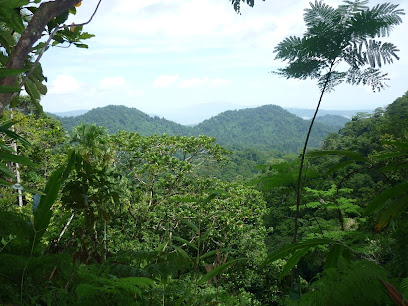
Essential places to dine
Nadina Authentic Fijian Restaurant
Savor authentic Fijian cuisine at Nadina Authentic Fijian Restaurant on Denarau Island - a delightful culinary journey awaits!

Best Fish & Chips-Waimalika
Discover the authentic taste of Fiji at Best Fish & Chips-Waimalika – where fresh seafood meets local charm in Nadi.

Liamo Reef Resort - Kimbe International Hotel
Experience luxury and adventure at Liamo Reef Resort in Papua New Guinea - where pristine beaches meet vibrant culture.

Solis Restaurant
Discover culinary excellence at Solis Restaurant in Sofitel Fiji Resort—where fresh seafood meets stunning ocean views for an unforgettable dining experience.
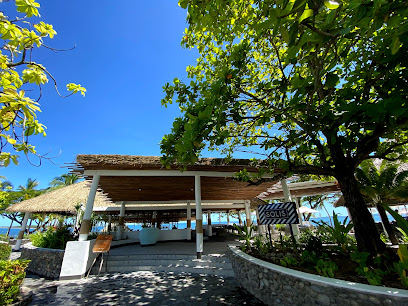
Waitui Bar & Grill
Discover culinary bliss at Waitui Bar & Grill in Sofitel Fiji Resort - where exquisite flavors meet stunning ocean views.

Sweet Laisa's Kitchen
Experience authentic Fijian flavors at Sweet Laisa's Kitchen in Nadi - where tradition meets taste in every dish.

Breakwater Cafe
Discover Breakwater Cafe: A waterfront oasis in Honiara offering delightful cuisine and stunning views for an unforgettable dining experience.
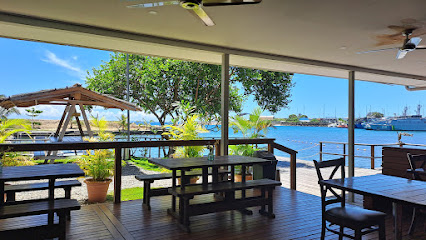
Coral Sea Resort & Casino
Experience luxury dining and thrilling gaming at Coral Sea Resort & Casino in Honiara – your ultimate getaway in the Solomon Islands.

King Solomon Hotel
Experience comfort and culture at King Solomon Hotel in Honiara - your perfect base for exploring the beauty of Solomon Islands.

Pacific Casino Hotel
Discover comfort and local charm at Pacific Casino Hotel in Honiara - your perfect base for exploring the stunning Solomon Islands.

The Coffee Bar
Discover tranquility at The Coffee Bar in Honiara – savor exceptional coffee amidst island charm and friendly vibes.

Tenkai Sushi Cafe
Discover authentic Japanese cuisine at Tenkai Sushi Cafe in Honiara – where fresh sushi meets vibrant island culture.

Honiara Hotel
Discover comfort and hospitality at Honiara Hotel, your gateway to exploring the vibrant culture and natural beauty of Honiara.

Bovotel Hotel
Discover the charm of Bougainville at Bovotel Hotel, where comfort meets local culture in Arawa's serene setting.

Mambo Juice!
Discover Mambo Juice in Honiara: A vibrant cafe offering fresh juices, coffee, and delicious sandwiches in an inviting atmosphere.

Markets, malls and hidden boutiques
Heritage Park Hotel
Experience tranquility and comfort at Heritage Park Hotel in Honiara, where lush gardens meet exceptional hospitality in the Solomon Islands.

Honiara Central Market
Discover the vibrant culture and flavors of the Solomon Islands at Honiara Central Market, a must-visit for every traveler.

Solomon Kitano Mendana Hotel
Discover comfort and local charm at Solomon Kitano Mendana Hotel, your perfect base in Honiara for an unforgettable Solomon Islands adventure.

Honiara Hotel
Discover the warmth and comfort of Honiara Hotel, your perfect retreat in the heart of Solomon Islands, blending culture, comfort, and connectivity.

Hyundai Mall
Explore Hyundai Mall in Honiara for an unforgettable shopping experience with diverse stores and delightful dining options.

Taro Island
Explore Taro Island, a tropical paradise in the Solomon Islands, where pristine beaches meet rich biodiversity and vibrant local culture.

STI Shopping Centre
Experience the vibrant culture and diverse shopping options at STI Shopping Centre in Arawa, Papua New Guinea.

Bulk Shop
Experience the best of local and international flavors at Bulk Shop, Honiara's premier grocery destination for tourists and residents alike.

Yeebing (Ausmart/Auspac) Ltd
Explore the vibrant Yeebing shopping mall in Honiara for a unique blend of local crafts, international brands, and delicious cuisine.

Tanuli Royal Plains Motel
Discover the comfort and charm of Tanuli Royal Plains Motel, the perfect stay for your Honiara adventure in the Solomon Islands.

Betel nut Market
Discover the lively Betel Nut Market in Taro, where vibrant local culture meets the rich tradition of betel nut trading in a unique shopping experience.

Choiseul Bay Airport
Experience the enchanting gateway to Taro Island at Choiseul Bay Airport, where adventure and culture meet in the heart of the Solomon Islands.

SOLBREW
Discover SOLBREW, Honiara's premier brewery, where local flavors meet craft excellence in every refreshing sip.

Central Plaza
Explore Central Plaza in Honiara, a vibrant shopping mall offering local crafts, international brands, and delicious dining options for every traveler.

Jerohi Mini-Mart
Explore local culture and home essentials at Jerohi Mini-Mart in Arawa, Bougainville - a perfect blend of convenience and authenticity.

Essential bars & hidden hideouts
Coral Sea Resort & Casino
Discover the perfect blend of relaxation and entertainment at Coral Sea Resort & Casino in Honiara, where stunning views and vibrant nightlife await.

The Coffee Bar
Discover the cozy charm of The Coffee Bar in Honiara, where exceptional brews and a welcoming atmosphere await every visitor.

Tenkai Sushi Cafe
Experience authentic Japanese cuisine at Tenkai Sushi Cafe, where fresh ingredients and expert craftsmanship create unforgettable flavors.
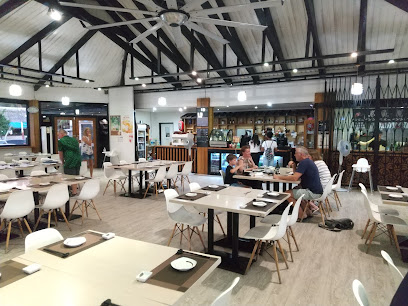
Taro Island
Explore the serene beauty of Taro Island, a tropical paradise in the Solomon Islands with stunning beaches, rich culture, and a vibrant marine ecosystem.

Hangers Tavern
Discover Hangers Tavern, a vibrant bar in Arawa, Papua New Guinea, perfect for enjoying local drinks and engaging with the lively atmosphere.
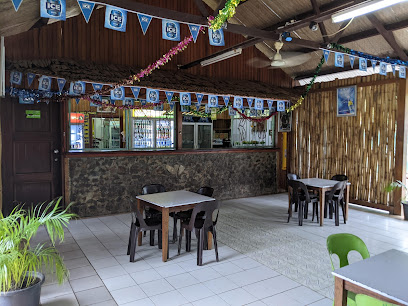
Rays' Tavern
Discover the vibrant atmosphere and local flavors at Rays' Tavern, Arawa's favorite bar for relaxation and socializing.

Jerohi Kai Bar
Experience the vibrant culinary scene at Jerohi Kai Bar in Arawa, Papua New Guinea, offering local flavors and international cuisine in a lively setting.
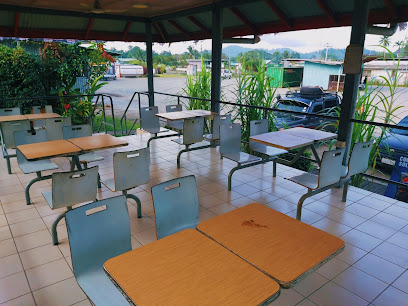
Mati Hauswin Bar & Grill
Experience the best of Papua New Guinea's cuisine at Mati Hauswin Bar & Grill, where local flavors meet friendly hospitality in a breathtaking setting.

SOLBREW
Experience the rich flavors of the Solomon Islands at Solbrew Brewery, a premier destination for craft beer lovers in Honiara.

Michael Tukaku Beach Front
Experience the enchanting Michael Tukaku Beach Front on Bougainville Island, where relaxation meets vibrant local culture in a stunning coastal paradise.

Singkeeru Transit&Food Bar
Discover the vibrant flavors of Papua New Guinea at Singkeeru Transit & Food Bar, a culinary gem in Arawa, offering delightful local and international cuisine.

Canoe Bar
Canoe Bar in Honiara: Discover a vibrant tropical escape with refreshing drinks and local culture in the heart of the Solomon Islands.

Tariu Kava bar
Discover the essence of Solomon Islands culture at Tariu Kava Bar, where traditional kava meets vibrant social experiences in the heart of Honiara.

Oil Palm
Discover the lively Oil Palm Bar in Arawa, where local charm meets refreshing drinks in a vibrant atmosphere.

XYZ Kai Bar
Discover the vibrant flavors of Arawa at XYZ Kai Bar, offering fast food with a local twist in the heart of Papua New Guinea.

Local Phrases
-
- HelloAlu
[ah-loo] - GoodbyeBubulu
[boo-boo-loo] - YesAe
[eye] - NoAu
[ow] - Please/You're welcomeTangio
[tang-ee-oh] - Thank youTangio tumas
[tang-ee-oh too-mas] - Excuse me/SorrySori
[sore-ee] - How are you?Yu stap gut?
[yoo stahp goot] - Fine. And you?Gut. Na yu?
[goot. nah yoo] - Do you speak English?Yu save toktok Inglish?
[yoo sah-veh tohk-tohk ing-gleesh] - I don't understandMi no save lukim
[mee no sah-veh loo-keem]
- HelloAlu
-
- I'd like to see the menu, pleaseMi laek lukim menu, plis
[mee lake loo-keem menu, plees] - I don't eat meatMi no kaik karem
[mee no kai-kah kah-rem] - Cheers!Tingim
[teen-geem] - I would like to pay, pleaseMi laek fo peim, plis
[mee lake foh pay-eem, plees]
- I'd like to see the menu, pleaseMi laek lukim menu, plis
-
- Help!Helpem!
[help-em] - Go away!Go we
[go way] - Call the Police!Kolem Polis!
[koh-lem poh-lees] - Call a doctor!Kolem dokta!
[koh-lem dok-tah] - I'm lostMi lusim
[mee loo-seem] - I'm illMi si
[mee see]
- Help!Helpem!
-
- I'd like to buy...Mi laek fo baem...
[mee lake foh bah-em...] - I'm just lookingMi jes lukim
[mee jess loo-keem] - How much is it?Hao moch?
[hah-oh moch] - That's too expensiveIu moch fiya
[yoo moch fee-yah] - Can you lower the price?Iu save daunim praes?
[yoo sah-veh down-eem prys]
- I'd like to buy...Mi laek fo baem...
-
- What time is it?Hao taem nao?
[hah-oh tah-em now] - It's one o'clockWan taem
[wahn tah-em] - Half past (10)Haf paes
[hahf pah-ess] - MorningMonin
[moh-neen] - AfternoonApinun
[ah-pee-noon] - EveningIvinin
[ee-vee-neen] - YesterdayDei befo
[day beh-foh] - TodayTudei
[too-day] - TomorrowTumoro
[too-mor-oh] - 1Wan
[wahn] - 2Tu
[too] - 3Tri
[tree] - 4Fo
[foh] - 5Faiv
[fah-eve] - 6Siks
[siks] - 7Seven
[sev-en] - 8Eit
[ate] - 9Nain
[nayn] - 10Ten
[ten]
- What time is it?Hao taem nao?
-
- Where's a/the...?Wei ia...
[way yah...] - What's the address?Wanem adras?
[wah-nem ad-dras] - Can you show me (on the map)?Iu save soem iu...
[yoo sah-veh soh-em yoo...] - When's the next (bus)?Hao nao namba...
[hah-oh now nahm-bah...] - A ticket (to ....)Wan tiket (go...)
[wahn tee-ket (goh...)]
- Where's a/the...?Wei ia...
History of Taro Island
-
The history of Taro Island dates back to ancient times when it was first settled by the indigenous peoples of the Solomon Islands. These early inhabitants were skilled navigators and fishermen who relied on the rich marine resources surrounding the island. Archaeological evidence suggests that the island was inhabited for thousands of years before European contact.
-
Taro Island, like much of the Solomon Islands, came into contact with European explorers in the 16th and 17th centuries. The Spanish explorer Álvaro de Mendaña was among the first Europeans to sight the islands in 1568. This period marked the beginning of intermittent European interest in the region, though significant settlement did not occur until later.
-
During the late 19th and early 20th centuries, Taro Island and the surrounding region fell under British colonial rule. The British established the Solomon Islands Protectorate in 1893, which included Taro Island. This period saw the introduction of Western education, religion, and trade, significantly impacting the island's traditional way of life.
-
World War II had a profound impact on Taro Island and the Solomon Islands as a whole. The island was strategically significant due to its location in the Pacific Theater. While Taro did not see major battles, the presence of Allied and Japanese forces in the region led to heightened military activity and the construction of infrastructure that would later benefit the island's development.
-
After World War II, Taro Island began to develop more rapidly. The establishment of infrastructure such as airstrips and communication networks facilitated greater connectivity with the rest of the Solomon Islands and the world. This period also saw an increase in educational and healthcare facilities, improving the quality of life for the island's residents.
-
In 1995, Taro Island became the capital of Choiseul Province. This designation brought administrative importance to the island and spurred further development. Government offices, schools, and other public services were established, solidifying Taro's role as a central hub in the province.
-
Despite the waves of change over the centuries, Taro Island has managed to preserve its rich cultural heritage. Traditional practices, dances, and ceremonies continue to play a vital role in the community. The island's cultural festivals attract visitors and provide a glimpse into the enduring traditions of the Solomon Islands.
-
In recent years, there has been a growing emphasis on environmental conservation on Taro Island. Efforts to protect the island's unique marine and terrestrial ecosystems have been initiated, involving both local communities and international organizations. These initiatives aim to ensure that Taro Island's natural beauty and biodiversity are preserved for future generations.
Taro Island Essentials
-
Taro Island is located in the Choiseul Province of the Solomon Islands. The nearest international airport is Honiara International Airport (HIR) on Guadalcanal Island. From Honiara, you can take a domestic flight to Taro Airport (TIZ). Alternatively, you can travel by boat from Honiara or other nearby islands. The journey by sea can be lengthy but offers a scenic view of the Solomon Islands' natural beauty.
-
Taro Island is small, and many areas are accessible on foot. For longer distances, you can use local taxis, which are available but not abundant. Renting a bicycle is another good option for getting around the island. There is no formal public transportation system on Taro Island, so plan accordingly.
-
The official currency in the Solomon Islands is the Solomon Islands Dollar (SBD). Credit cards are rarely accepted on Taro Island, so it is advisable to carry sufficient cash. There are no ATMs on Taro Island, so ensure you withdraw enough funds before arriving. Some larger businesses may accept major foreign currencies like USD, but it's always best to have local currency on hand.
-
Taro Island is generally safe for tourists. However, standard travel precautions should be taken. Avoid walking alone at night and be mindful of your belongings in public spaces. There are no specific high-crime areas targeting tourists, but staying vigilant is always recommended.
-
In case of an emergency, dial 999 for immediate assistance. There is a local police station and a small medical clinic on Taro Island. It is highly recommended to have travel insurance that covers medical emergencies. For minor health issues, basic medications can be found at the local clinic.
-
Fashion: Do dress modestly, especially when visiting local villages and religious sites. Avoid wearing revealing clothing. Religion: Do respect local customs and religious practices. Always ask for permission before taking photos in sacred areas. Public Transport: Do be respectful to other passengers if using any transport services. Don’t expect a formal schedule for transportation. Greetings: Do greet people with a friendly 'Hello' or 'Halo' (local greeting). Shaking hands is also common. Eating & Drinking: Do try local foods and accept food offerings graciously. Don’t refuse hospitality, as it can be considered impolite.
-
To experience Taro Island like a local, visit the local markets where you can buy fresh produce and traditional Solomon Islands goods. Engage with the locals who are often friendly and willing to share stories about their culture and history. Don’t miss out on local festivals or events if your visit coincides with them, as they offer a unique insight into the local way of life.
Nearby Cities to Taro Island
-
Things To Do in Arawa
-
Things To Do in Gizo
-
Things To Do in Yandina
-
Things To Do in Tulagi
-
Things To Do in Honiara
-
Things To Do in Auki
-
Things To Do in Kokopo
-
Things To Do in Rabaul
-
Things To Do in Kimbe
-
Things To Do in Alotau
-
Things To Do in Kavieng
-
Things To Do in Lae
-
Things To Do in Port Moresby
-
Things To Do in Lata
-
Things To Do in Madang








